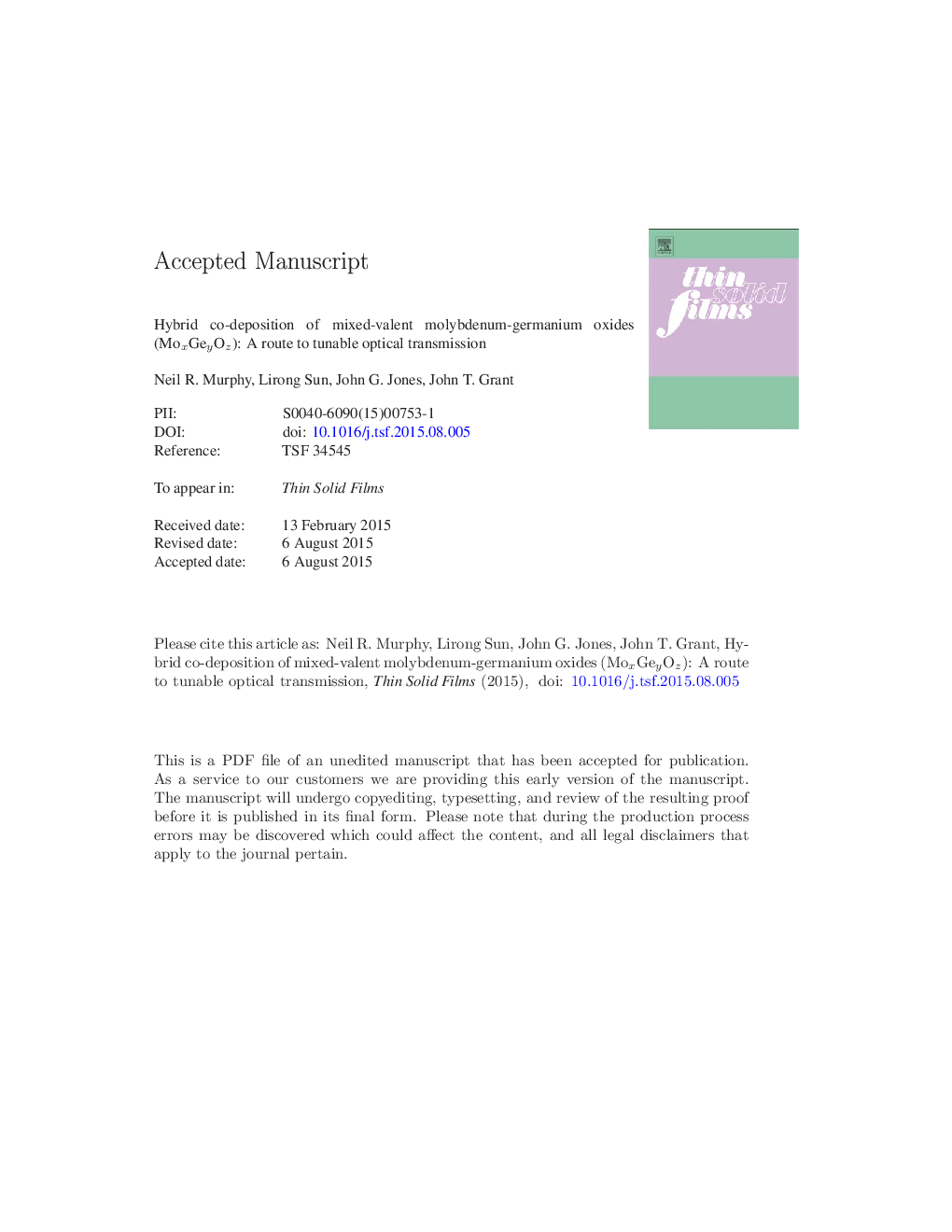| Article ID | Journal | Published Year | Pages | File Type |
|---|---|---|---|---|
| 8033971 | Thin Solid Films | 2015 | 55 Pages |
Abstract
Mixed-valent oxides of molybdenum and germanium were deposited simultaneously using reactive magnetron co-deposition within an oxygen-argon environment. The films' stoichiometry, optical, and physical properties were varied through changes in oxygen partial pressure induced by systematic variation of the potential applied to the molybdenum cathode. The oxygen partial pressure was determined from the drop in pressure as measured by a capacitance manometer, assuming constant argon partial pressure. To facilitate deposition, a constant power of 100Â W DC was applied to the germanium cathode, while power was applied to the molybdenum target using a modulated pulse power supply. Modulated pulse power magnetron sputtering was used due to its ability to generate high target power densities, allowing for rapid reduction of oxygen on the surface of the “oxygen poisoned” molybdenum cathode, as well as for its highly metallic plasma resulting in increased oxygen-gettering capability. Changes in the modulated pulse power supply's capacitor bank voltage load, stepped from settings of 300 to 380Â V, resulted in films ranging from mixtures of transparent GeO2 (Ge4Â +) and MoO3 (Mo6Â +) to the introduction of various absorptive ionic species including Mo5Â +, Mo4Â +, Ge2Â + and Ge0, as determined from X-ray photoelectron spectroscopy. The presence of each of the aforementioned ions results in characteristic changes in the films' band energies and optical absorption. As deposited MoxGeyOz thin films grown using this method have been shown to have optical gap energies that are able to be tailored between 3.57Â eV and 0.18Â eV, spanning useful ranges for devices operating in the visible and near-infrared.
Keywords
Related Topics
Physical Sciences and Engineering
Materials Science
Nanotechnology
Authors
Neil R. Murphy, Lirong Sun, John G. Jones, John T. Grant,
